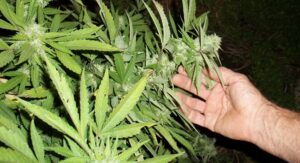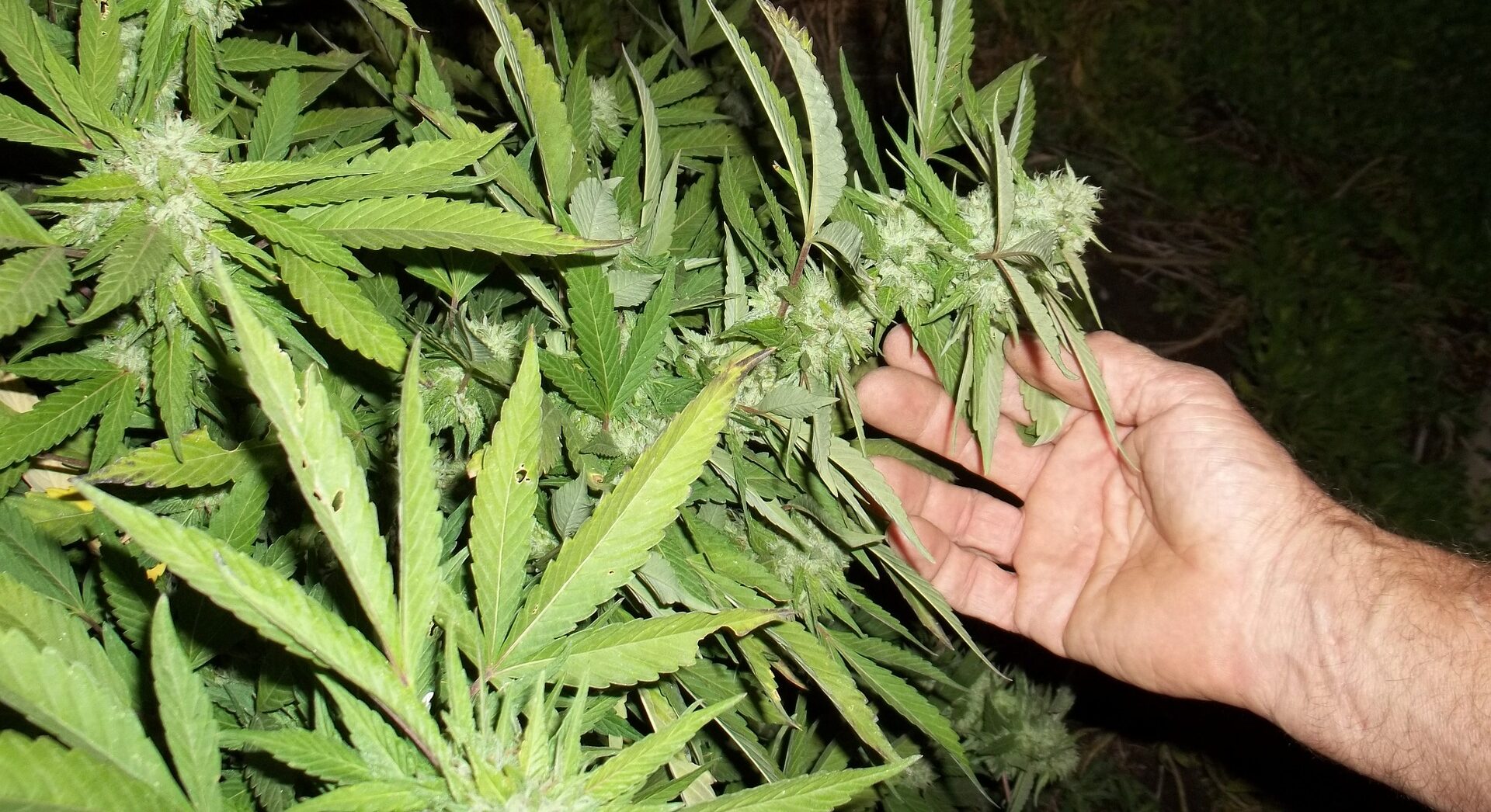Cannabis & GMP/GACP: Part 2 - Quality Systems

Welcome to our summer series on cannabis and GMP/GACP. A new article will be published once a week throughout the summer. You can access related articles that have been published so far by clicking the Compliance category on the main News & Events index page: Compliance category
Cannabis Around the World
The legality of cannabis varies from around the world. In some regions, cannabis is licensed for both medical and recreational use. In others, cannabis is licensed for medical use only. And in some, cannabis remains a prohibited substance for any use.
At the time of writing this, 50 nations had legalized cannabis nationally or regionally for medical or recreational use. Each individual region sets the standards for cannabis production, manufacturing and distribution.
The types of standards that are applied to cannabis are collectively known as ‘quality systems.’ Most quality systems are similar to each other, using accepted good practices. What differs are the processes they cover, which are dependent on the products being manufactured.
In many cases, the standards applied to cannabis are based on pre-existing quality systems designed for other types of manufacturing or production. Since the plants are grown in an agricultural setting, agricultural standards, such a Good Agricultural & Collection Practice (GACP), can be applied. As cannabis has drug qualities and therapeutic value, pharmaceutical standards, such as Good Manufacturing Practice (GMP), can be applied. With testing for THC and other values, clinical or laboratory standards can be applied. As well, general business standards, such as those from the International Organization for Standardization (ISO), can also be applied.
New standards, however, can be created at any time. When Canada was legalizing cannabis, Health Canada created a new quality system designed specifically for cannabis called Good Production Practice (GPP).
When other regions were considering cannabis, however, most decided not to create a new standard as Canada did and chose GMP or GACP instead.
Each of these quality systems has the same type of framework. Rather than rigid rules, most standards provide guidelines for carrying out operations. The standards are not designed to limit how a business operates. Instead, they are intended to guide the facility toward good practices. The ‘how’ of complying is left up to the individual organization. Each facility is allowed to determine the best way to meet the criteria. The final result is what is important.
Quality Standards Benefits
Besides meeting compliance regulations, adhering to a quality system offers many benefits, including increased productivity, improved employee safety, and enhanced customer satisfaction. But one of the main purposes of standards in relation to cannabis is to minimize the following risks.
- Contamination of products that could make them unsafe.
- Inaccurate labelling that could lead to accidental misuse.
- Insufficient active ingredients that could affect efficacy.
- Excess active ingredients that could be hazardous.
These risks are the reason cannabis operations must comply with a quality system, regardless of where they are in the world. There may be one governing body with one set of standards clearly laid out. In other cases, there may be several sets of standards that focus on different areas of operation. When setting up a facility, each cannabis business must identify which standards will apply and how to meet them.
Links
Following are links to the various standards that could be applied to cannabis.
Good Agricultural & Collection Practices/GACP (also called GAP): International; Israel
https://www.who.int/publications/i/item/9241546271
https://www.gov.il/en/departments/topics/medical-cannabis/govil-landing-page
Good Production Practices GPP: Canada
Good Manufacturing Practices/GMP: International; European Union; Australia
Current Good Production Practices/cGMP: USA
Good Distribution Practices/GDP: United Kingdom
https://www.gov.uk/guidance/good-manufacturing-practice-and-good-distribution-practice
Why you need seed-to-sale software for your cannabis business
 Introduction
Introduction
Seed-to-sale software tracks plant production from reproduction through growth, harvesting, drying, packaging, sales and distribution. Health Canada mandates record keeping for every part of the process, and Canadian seed-to-sale software applications focus on compliance built on Health Canada’s regulations.
Record keeping is an essential part of Health Canada’s compliance regulations. From the advent of legal medical marijuana in Canada, legal producers of cannabis have been required to track every seed, rooted plant, gram of waste material, final dried product, as well as interactions with customers. Due to the sheer volume of information, an electronic record-keeping system is the only practical way to manage the process. The software industry has responded to this need by creating seed-to-sale management software systems designed to help producers track their operations and report to Health Canada to meet compliance.
As a Health Canada applicant, you must specify the name of the software system you plan to use for record keeping and provide a summary of how the software program meets Health Canada’s requirements. As a result, you will need to make at least preliminary decisions into seed-to-sale management software early on in your application process.
This might seem like one more challenge along your path to becoming a licensed producer, but in reality, seed-to-sale software is designed to help you be successful.
Seed-to-sale software platforms should provide the electronic record keeping required to not only for you to meet compliance, but also to help you be successful in your business. From greenhouse to warehouse to customer, your software system should help you at every stage of your operation. Functionality for genetics tracking, inventory management, quality control, shipping & receiving, point-of-sale ecommerce, compliance auditing & reporting, and customer relationship management can provide you with full business administration.
Licensing
To do business in the cannabis industry in Canada, you must meet Canada’s licensing requirements. Currently there are several types of licenses for those wishing to carry out cannabis-related business in Canada.
- Standard Cultivation
- Micro-cultivation
- Nursery
- Standard Processing
- Micro-processing
- Sale
- Analytical Testing
- Research
Regardless of which class of license you get, you will be responsible for complying with all the regulations that apply from the various levels of government.
The Laws
The Cannabis Act
Formerly called the ACMPR, this act covers all aspects of cannabis in Canada from growing through processing to selling and more. It is the responsibility of the licensee/applicant to understand and meet all the requirements that apply to their business.
Other Federal Acts and Regulations
As a licensee or applicant, you are responsible for complying with requirements of other Canadian acts and regulations such as the Food and Drugs Act (FDA), the Pest Control Products Act, the Fertilizer Act, among others.
The Canada Revenue Agency
You’ll also need to meet requirements of the Canada Revenue Agency depending on which activities will be conducted with cannabis.
Provincial or Territorial Legislation
As a licensee or applicant, you’ll be responsible for complying with all applicable provincial or territorial laws and regulations (environmental laws, for example).
Municipal By-Laws
As well, you’ll need to deal with municipal by-laws such as zoning and building permits.
How can seed-to-sale software help?
From the advent of legal medical marijuana in Canada, legal producers of cannabis have been required to track every seed, plant, gram of waste material, final product, and more. Due to the sheer volume of information, an electronic record-keeping system is the only practical way to manage the process.
The software industry has responded to this need by creating seed-to-sale management software designed to help businesses meet compliance. Seed-to-sale software tracks growth, harvesting, processing, packaging, sales and distribution.
And some seed-to-sale software systems go beyond compliance to help businesses cultivate success with features and functionality to help fine-tune propagation, growth cycles, harvesting, production, derivatives, inventory, staffing, and product sales. AirMed is one of those. Wherever your business fits in the seed-to-sale supply chain, AirMed can help with both legal compliance and business acumen. For a free demo, call 877-313-2442, email info @ airmed.ca or fill out the form on our contact page.
For information on cannabis licensing in Canada visit: Cannabis Licensing Application Guide
For more information on purchasing seed-to-sale software, fill out a form to download our complete buyer’s guide: Seed-to-sale Software Buyer’s Guide
ACMPR and the licensed cannabis producer

What does ACMPR cover?
For the cannabis industry in Canada, the most critical compliance implications are those covered by the Access to Cannabis for Medical Purposes Regulations. This legislation covers every aspect of marijuana production and sale. Overseen by Health Canada, these regulations must be adhered to at every stage of cannabis business from propagation through to sale. As of August 24, 2016, the Access to Cannabis for Medical Purposes Regulations (ACMPR) replaced the previous Marihuana for Medical Purposes Regulations (MMPR).
ACMPR is designed to provide an immediate solution for Canada to meet legal requirements. But Health Canada is continuously evaluating how a system of medical access to cannabis should function alongside the government’s commitment to legalize, strictly regulate and restrict access to cannabis. As a result, laws and regulations may change.
Currently, the legislation contains four parts.
Part 1 sets out a framework for commercial production by licensed producers responsible for the production and distribution of quality-controlled fresh or dried marijuana or cannabis oil or starting materials (i.e., seeds and plants) in secure and sanitary conditions.
Part 2 sets out provisions for individuals to produce a limited amount of cannabis for their own medical purposes or to designate someone to produce it for them.
Parts 3 and 4 include transitional provisions, consequential amendments to other regulations, and provisions repealing the MMPR.
All those wishing to produce cannabis in Canada must apply to Health Canada to become a licensed producer under the ACMPR legislation, and all licensed producers MUST comply with the ACMPR regulations.
What are the specific ACMPR regulations that affect software and record keeping?
The ACMPR has many regulations that apply to the medical marijuana industry in Canada as a whole. Not all of those have implications for record keeping or to the method (software) used for that record keeping. (For links to the different websites that cover ACMP download our Seed-to-Sale Software Buyer’s Guide.)
How do I meet ACMPR compliance?
To be ACMPR compliant, your organization must have ways of meeting all of the regulations listed above.
Many of the regulations listed above apply to processes, so you’ll need to be utilizing best practices and documented standard operating procedures. You’ll also need to be able to prove to Health Canada that you have used best practices. That’s where seed-to-sale software comes in. Your cannabis business management software should provide you with the means to meet compliance when it comes to record keeping and reporting.
To support you in this process, a viable software vendor will supply you with a document that outlines exactly how the system they provide meets those requirements.
For a free demo to learn how AirMed meets these and other regulations, please email info @ airmed.ca.


